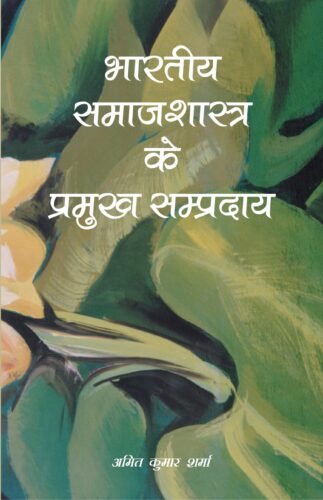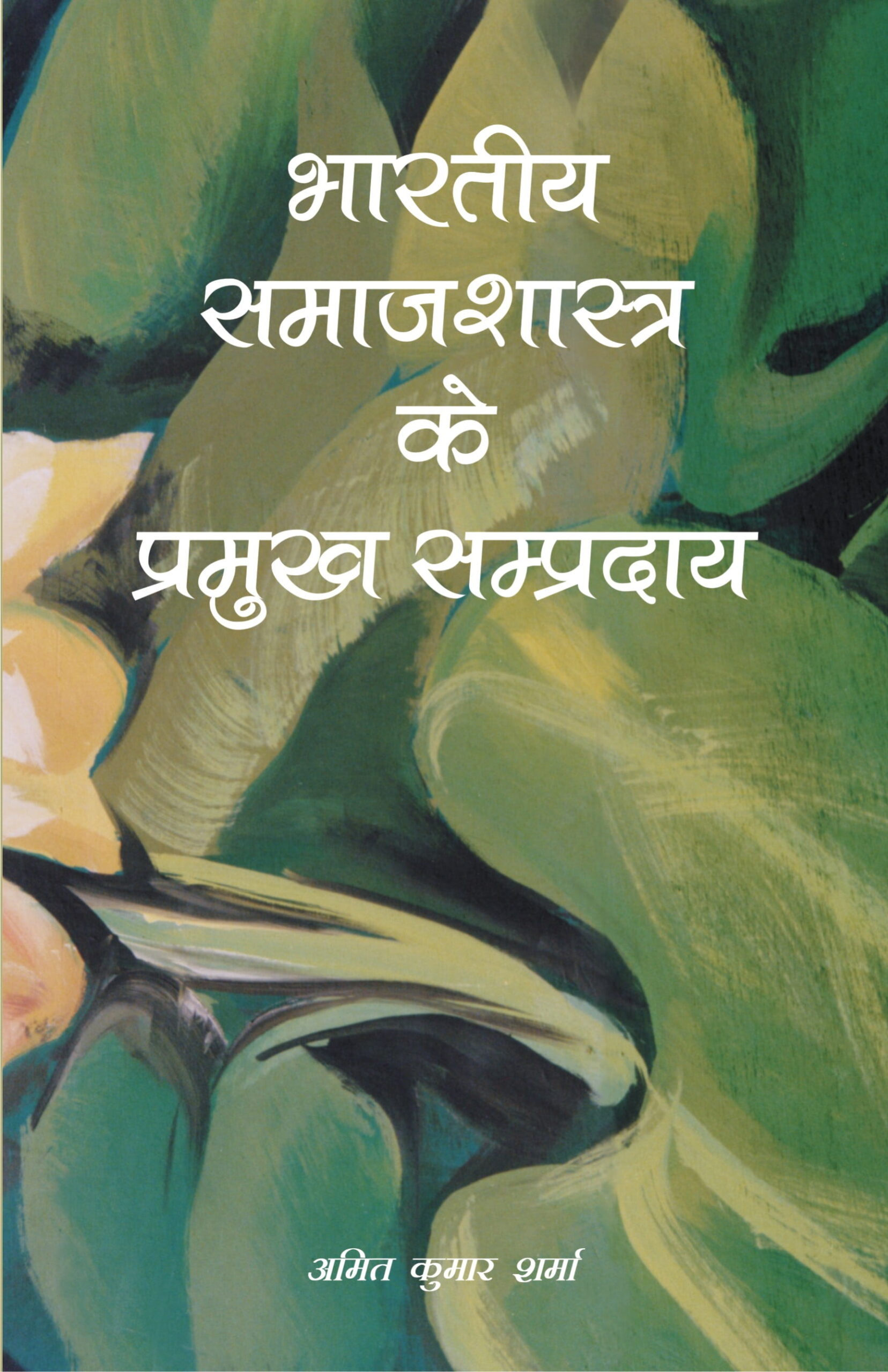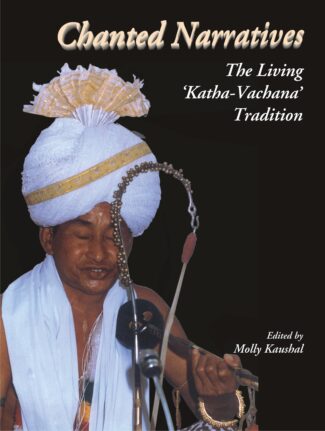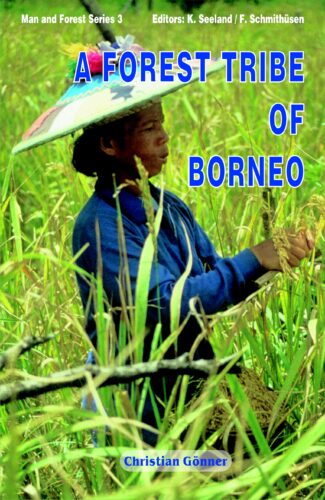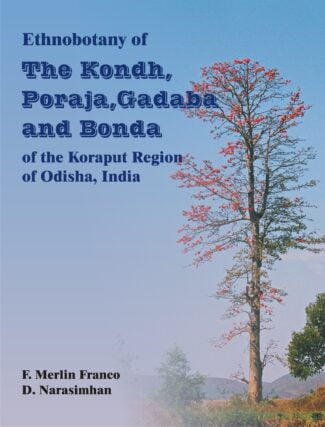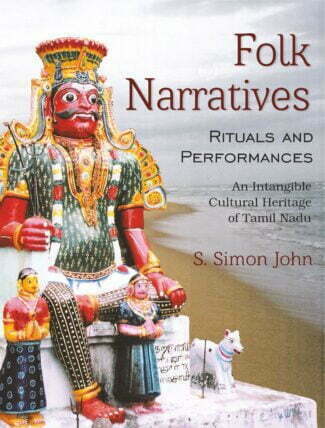

Bharatiya Samajshast...
Bharatiya Samajshastra ke Parmukh Sampardaya
by: Amit Kumar SharmaSociology, as a social science, is new to India. This volume in Hindi thus discusses the advent, teaching and development of sociology in India. It is an outstanding narration of advent and evolution of sociology in India and the major sociologists.
₹660.00 Original price was: ₹660.00.₹594.00Current price is: ₹594.00.
ISBN: 9788124606018
Year Of Publication: 2011
Edition: 1st
Pages : xix, 284 p.
Bibliographic Details : Bibliography; Index
Language : Hindi
Binding : Hardcover
Publisher: D.K. Printworld Pvt. Ltd.
Size: 23
Weight: 550
Bharatiya Samaj Shastra ke Pramukh Sampradaya is a book in Hindi language that deals with the advent, teaching and development of Sociology in India.It is an original book that deals with the major Sociologists in India. This book divides the whole history of sociology in India into nine interesting chapters. This book is an outstanding narration of the advent and evolution of Sociology in India. For a long time there was a need of such a book in Hindi .This is a helpful book for the teachers, students and researchers in various colleges, Universities and research institutions. For the researchers in Hindi literature, Cinema and Culture this can be used as a reference book. This book is also helpful for the UGC. / NET aspirants in Sociology.

- Sale!Forest Tribe of Orissa: Vol. 2: The Kuttia Kondh by: Mihir K. Jena, Padmini Pathi, Kamala Kumari Patnaik, Klaus Seeland,
₹1,100.00Original price was: ₹1,100.00.₹990.00Current price is: ₹990.00.In the management of renewable resources, forests have undeniably a vital role, and today, as never before, their conservation is an urgency. In view of this dire necessity the series Man and Forest tries to highlight the relevance of indigenous knowledge of various South Asian tribal communities in the sustainable management of forests/local resources more specially against the growing challenges of economic development vis-a-vis environmental hazards and a rapidly declining resource base. A scientific inquiry into indigenous knowledge is an effort to discover/rediscover the tribals traditional modes of production and conservation. For them it is the only source to cope with the problems of modernity affecting their lives and precarious environments. Forest Tribes of Orissa: The Kuttia Kondh is the sixth monograph in the series Man and Forest and, after the publication of an account of the forest world of the Dongaria Kondh in 2002, the second volume to deal with an aboriginal tribe of Orissa. Being a tribal community in transition, the authors have tried to document and thus safeguard its local traditional knowledge of conservation, use and management of forests and natural resources. They give an account of how the Kuttia Kondh classify trees and other plants, hills, forests, crops and animals. Their subsistence economy, agricultural system, social organization, religious beliefs and other important socio-cultural aspects of forest life have been extensively treated. The lifestyle of this tribal community is finally reflected on the background of forest policy and the impact it has on their livelihood. The present book is, as most of the volumes in the series, the outcome of nearly ten years research venture involving an interdisciplinary, intercultural team of sociologists, ethnobotanists, social anthropologists and other social scientists.
- Sale!Chanted Narratives by: Molly Kaushal
₹900.00Original price was: ₹900.00.₹810.00Current price is: ₹810.00.Every region/community of the world has its sahre of oral creativity, in varying measures though. And, accordingly, has its own legacy of chanted narratives: epical, hostorical, mythical, romantic, or even ritualistic. Which have long survived in the collective memory of its people, having been handed down from generation to generation. Confronted, however, by the cornucopian techno-centrism of todays life, these oral narratives are on their way out everywhere like many other vibrant cultural phenomena. Highlighting why we need to preserve this intangible heritage of mankind, the volume offers a fascinating study of chanted narratives from different regions of India and parts of Southeast Asia. Essentially a multi-author work, it explores the nature of orality and its various attendent aspects, like composition, performance, transmission modes, socio-economic context, and the relationship that exists between its performer and the audience. Also addressing methodological issues concerning the existing definitions and terminologies, the authors argue for a paradigm shift in the academic discourse on orality and oral cultures. Carrying twenty four contributors of leading scholars from France, Germany, India, Indonesia, Italy, Nepal, New Zealand, Sri Lanka and UK, the book not only provides theoretical insights into the complex nature of orality, but sets out a rich repertoire of chanted narratives as well. Folklorists, anthropologists, historians and scholars of Indian cultures will find it a useful acquisition.
- Sale!Forest Tribe of Borneo by: Christian Gonner
₹800.00Original price was: ₹800.00.₹720.00Current price is: ₹720.00.Here is the third volume in the series Man and Forest: a series trying to highlight the relevance of indigenous knowledge of various tribal communities in the sustainable management of forests/local resources against the growing challenges of environmental hazards and a declining resource base. The volume takes the reader to the Dayak Benuaq village of Lempunah in Borneo (East Kalimantan, Indonesia) where, for over three hundred years, the local tribal population has made extensive use of its forest resources. More than a hundred locally-differentiated rice varieties and 150 other crops are cultivated over a mosaic forest of 9,200 ha. Besides maintaining a high level of bio-diversity, Lempunah villagers are managing an enormous reservoir of flora and fauna for their extended subsistence economy, including trade with various forest products over long distances. Market fluctuations and other uncertainties here are coped with by resource diversification and a high dynamic flexibility in switching between the use of resources. Together with vivid descriptions, Christian Gonner offers an insightful analysis of local resource use patterns, covering swidden agriculture, mixed forest gardens, rattan gardens, rubber gardens, and the non-cultivated forest in-between and temporal and spatial aspects of life in Lempunah. Christian Gonner has, for this study, applied ethnological, ecological, and geographical field-research methods.
- Sale!Ethnobotany of The Kondh, Poraja, Gadaba and Bonda of the Koraput Region of Odisha, India by: F. Merlin Franco, D. Narasimhan,
₹1,250.00Original price was: ₹1,250.00.₹1,125.00Current price is: ₹1,125.00.Understanding the ecological knowledge of tribal and rural societies is necessary to conserve and sustain natural resources. This volume discusses the history and importance of ethnobotany with specific reference to four tribal communities of Odisha, India. It begins with an account of the nature of the tribes involved in the study. Based on participatory fieldwork, it presents an insider’s account of the tribal culture and its relationship with plants. It provides the ethnobotanical descriptions of 210 species of plants belonging to 77 families, presenting their local names, origin and the medicinal, cultural, culinary, economic, ecological uses of the species. It takes up study of the plants used by tribes in the drug-based and spiritual healing processes elaborating the philosophies behind knowledge transmission such as divination, hereditary, discipleship and kinship. Related aspects such as disease diagnosis, diet restrictions and rituals are depicted in detail. There is a special chapter on forests and non-timber forest products (NTFPs) that details the efforts of communities in forest conservation, their land-use patterns, forest classification systems, list of NTFPs and their harvest-consumption patterns. It also deals with the role of NGOs, middlemen and government agencies in this. Throughout, the emphasis is on the philosophical relationship of the communities with their ecosystem.
The book would prove extremely useful to policy-makers, academicians, social workers and general readers looking forward to accompany the tribal communities towards ethno-sensitive development. - Sale!Folk Narratives Rituals and Performances by: S. Simon John
₹1,800.00Original price was: ₹1,800.00.₹1,620.00Current price is: ₹1,620.00.Folk Narratives: Rituals and Performances reflects the world-view of the traditional societies and it is considered as an Intangible Cultural Heritage (ICH) of a particular community or society. This study investigates the culture, in a particular sociocultural context, of the multifaceted Tamil society through numerous rituals, offerings, vows, customs, practices, belief systems, performing folk arts, fairs and festivals, dance and music, material culture, etc. which are deeply rooted in their cultural moorings, and practised and closely associated with the folk religion, life-cycle ceremonies and social psychology.
This illustrative monograph systematically documents, investigates and discusses different aspects of ICH of Tamil Nadu childrens folklore, proverbs, material folk culture, oral narratives, folk gods and goddesses, and ritual practices. A number of colourful photographs enable one to grasp the rich cultural heritage of Tamil Nadu at ease.
The monograph will be of interest to scholars and researchers across humanities and social sciences especially those in folklore, anthropology, sociology, cultural studies, religion, ritual studies, art and performance studies. It will also appeal to the general reader.


